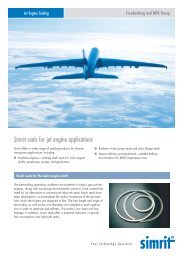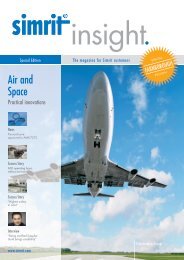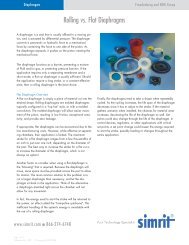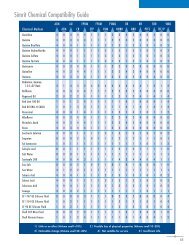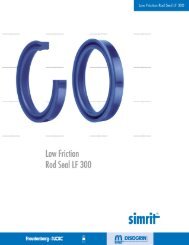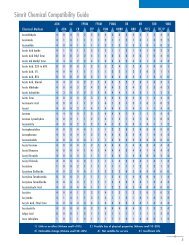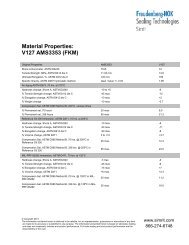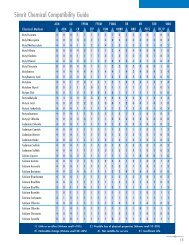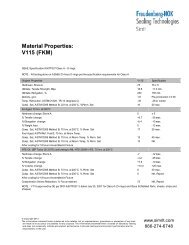Diaphragm Design Manual - Simrit
Diaphragm Design Manual - Simrit
Diaphragm Design Manual - Simrit
You also want an ePaper? Increase the reach of your titles
YUMPU automatically turns print PDFs into web optimized ePapers that Google loves.
Table of ContentsPageList of Tables, Figures, and Formulas 5Introduction 7<strong>Design</strong> Guideline – Initial <strong>Design</strong> ConsiderationsA “Quick Start” <strong>Design</strong> Check List 8Materials 10Elastomers 11General Purpose Elastomers - Oil ResistantEpichlorohydrin (ECO)Neoprene (CR)Nitrile (NBR or Buna-N)General Purpose Elastomers - Non-Oil ResistantButyl (IIR)Ethylene Propylene (EP or EPDM)Specialty ElastomersEthylene-acrylic (EA)Fluorosilicone (FVQM or FSI)Fluorocarbon (FKM)Polyacrylate (ACM)Silicone (VQM or SI)Fabrics 14General Purpose FabricsCottonNylon and PolyesterSpecialty FabricsFiberglassNomex TM and Kevlar TMOther Fabric Types<strong>Diaphragm</strong> Styles 16<strong>Diaphragm</strong> Construction Styles 17One Side Coated ConstructionTwo Side Coated ConstructionFlat <strong>Diaphragm</strong>s 18<strong>Design</strong> Guideline – Flat <strong>Diaphragm</strong> Stroke LimitsBlousingThe Trampoline SyndromeFlat <strong>Diaphragm</strong> – Closing CommentsFormed <strong>Diaphragm</strong>s 19<strong>Design</strong> Guideline – Min Convolution Width for One Side Coated Parts© Copyright FNGP 20092



